|
|
|
(Paid Advertisement)
The Monsterwatch Project
monsterwatch.itgo.com
A Not-Quite-Official
Flathead Monster
Personal Blog

Moving from one residence to another can be one of the most stressful times in our lives. Packing up, cleaning, and moving your most precious belongings can take all the energy out of you. After you have completed your move and it’s time to unwind, finding inexpensive ways to relax can be difficult. We’ve compiled a list of inexpensive ways to relax after moving.
There are several ways to relax without putting another dent in your wallet. Come up with your own creative ways to relax and incorporate them as much as needed. Relaxing extends past moving, making it a part of your lifestyle.
If you have questions about how US Border Movers can make apartment moving easy and affordable, don’t hesitate to ask!

The saying goes “If you can make it here, you can make it anywhere”. Tall buildings, bright lights and tourist attractions are awesome but for most, New York is home to millions. Every day, thousands are moving in and out of New York and the struggle to find your way can be dreadful.
At first glance, moving around New York can seem overwhelming because of speeding taxis, bumper-to-bumper traffic, tall buildings, and small streets but if this is your first time moving to New York, there are a few solutions to help you overcome your worries.
There are a lot of things to consider when moving to New York. One of the most important ones is making sure you are protected during your move. Finding a legitimate moving company is one of the first steps in the process. Luckily for you, we take the search away by having qualified movers contact you.
Here are some simple steps before making a decision on a long distance moving company in New York:
Considering that most New York streets are considerably small, it is quite possible that you won’t be able to get your moving truck down the street. If this is the case, inform the moving company ahead of time that they may have some trouble maneuvering down the street. This will ensure they can make proper adjustments beforehand. Most long distance moving companies may need the use of a smaller truck or a shuttle truck.
Reading the parking signs in New York is extremely important. Parking on the wrong side of the street or being illegally parked at the wrong time can cost you. You can be heavily fined or even worse, towed. Before moving, scope out the area to get a better understanding of what you are capable of doing during the moving process. Some buildings have move-in/move-out times that will give you elevator and parking access without any hassle. Check with the leasing office or building manager to make sure.
If you are moving from one city to the next in the state of New York, you can verify that a moving company is licensed by the Commissioner of Transportation by calling (800) 786-5368, or e-mailing the agency at nymoving@dot.state.ny.us.
Moving to New York comes with making sure you have proper identification. Within 30 days of your residence you must get a New York State driver's license if you plan on driving around town. Even though a New York state license is required, the state of New York recognizes valid driver's licenses held by residents of other US states, territories, federal districts, and Canadian provinces. It's fairly easy to exchange an out-of-state driver's or Canadian driver's license for a NYS driver's license. Visit the New York DMV site to learn more.
If you have never been to New York, traveling around can seem overwhelming. Contrary to popular belief, New York is one of the most convenient cities to maneuver in. With continuous trains, buses, and taxi cabs, it is almost impossible not to get from point A to point B no matter the time of day.
The biggest question that people ask themselves once they have moved to New York is “will I need my car?”. With convenient access to trains, buses, and cabs, it may make sense for you to get rid of your vehicle if you find yourself not driving as much as you used to. Getting rid of your vehicle can save you a good deal of money on car insurance and gas if you made the decision to sell your car. After all, you could utilize those funds towards rent if you have to.
Most parts of New York are known for having limited parking along with the cost of parking if you are able to find parking. If you can avoid driving, take public transportation.
Like any other city, finding a suitable neighborhood to come home to every day is important. There are some important factors that play a part in the decision making. Finding a place within your budget, that’s safe, and convenient to work and play are usually the most important.
Finding a place that is right for you can seem overwhelming hearing such stats. Not to worry, there are several brokers and apartment finder resources to help you find the right place for you.Here are some other great ways to find a home in New York:
Brokers - One of the most common methods of finding an apartment in New York is using a real estate broker. If you know what neighborhood you want to live in, it's usually best to find a broker based there. Many brokers also have Websites where you can view available apartments, sometimes even with photos and detailed descriptions. If you have decided to use a broker, keep in mind that you will probably have to pay a broker's fee which is usually one month’s rent.
Word-of-Mouth – If you know someone who currently lives in New York, getting references from them could help out substantially. Finding an apartment through word of mouth is a lot cheaper than using a broker. Ask your friends and family if they can provide any help with your search.
Classified Ads -Another common method used by movers is using the classified ads. Movers have been known to use the New York Times, the Village Voice, Newsday, the Daily News, and local or community papers. Make sure to check out the web sites of local papers and online message boards like newyork.craigslist.org.
Apartment Referral Service - For the savvy hunters who are comfortable searching the Internet, there is an apartment referral service. For a monthly fee, referral services will provide you with a list of no-fee apartment rentals as they become available.
Get on Waiting Lists - Affordable housing is often offered through waiting lists or application lotteries. If you have time before you need to move, put your name on waiting lists and/or fill out applications for affordable housing through the NYC Department of Housing Preservation & Development (HPD), the New York City Housing Development Corporation (HDC), or the NYC Housing Authority (NYCHA).
Apartment Guides – You can always rely on resources like ForRent.com. These general references are great for apartment hunting right from your computer.
The most important part about finding the right home for you is making sure you are prepared. In order to move in, you will need to have at least two month’s rent plus the security deposit (usually one month’s rent). Be prepared to cover the fees associated with moving.
If you're planning on moving in the winter, get a free moving estimate from US Border Movers so you can drive in your own vehicle while experts drive the big trucks!

Whether you are moving to an apartment or a three-bedroom home, the one thing that is unavoidable is moving furniture. Moving furniture is one of the most dreadful parts of moving because it's heavy, it's bulky, and it’s expensive.
Most care dearly about their furniture and want to see it handled with the most care but at what cost? Based on your budget, you might want to hire a professional mover or move it yourself.
Furniture can be extremely heavy and hiring a mover seems to be the best choice even for those with starter furniture sets. If you are on a shoestring moving budget, the safety and convenience often outweighs the possibility of injuring yourself or destroying your furniture which could cost you more money.
Your back and wallet will be spared if you keep these tips in mind:
If hiring a moving company is out of the question, moving it without professional help can be done with the proper tools and technique. Before moving day, you should devise a plan for moving your information out of the room into the moving truck.
Planning ahead will ensure a smooth move whether you decide to move yourself or hire a renter. Leave yourself enough time to enlist a high quality mover or find the right people to make your move a complete success.
Have questions or need a moving estimate? Let us know! We'll be happy to help. Click here to know more!

You know it, I know it, the whole world knows it; the environment is a very fragile entity that must be treated with care and respect. With all the latest news about global warming and being environmentally friendly, everyone is trying to figure out new ways to recycle and save energy and natural resources. From ethanol powered cars to energy saving light bulbs, companies and manufacturers are trying to do their part to help preserve this precious planet of ours.
But what can you do personally to help save the planet? When a person moves they inevitably use many different types of packing materials; boxes, blankets, bubble wrap, tape, rope, scissors, Styrofoam peanuts, and the list goes on and on. When it comes to these materials, boxes are probably needed most. It used to be that once a box is used it gets thrown away never to be seen again. But with the recent "green" resurgence, choosing boxes can become a more complicated, but necessary process. Just to paint you a picture, in 1995, 13 million tons of cardboard was disposed of (14% of the total municipal solid waste generated). Cardboard is by far the single largest contributor to municipal solid waste in this country. And what are moving boxes made of? That's right, cardboard.
Instead of just picking up the cheapest or strongest boxes, first do some research to make sure that your box is recycled or can be recycled. There are two types of places to pick up some moving boxes; from a supplier or from someone who is getting rid of boxes. The latter is obviously cheaper and environmentally friendly because you’re reusing a box that otherwise might’ve been thrown out. If you’re only in a position to purchase moving boxes, then there are certain things you should avoid to stay environmentally friendly.
Sometimes a cardboard box looks like cardboard, feels like cardboard, and may even smell like cardboard. But the truth is, it may not be 100% cardboard. Sometimes boxes are contaminated with other materials such as wood, polystyrene foam, metal, plastic, wax, and newspaper can be found within your cardboard boxes. What’s the big deal? The problem with these contaminants is that they interfere with remanufacturing the boxes because they have to be separated from the actual cardboard. This is a difficult, time consuming, and expensive process. Consequently, contaminated boxes often get thrown by the wayside. Although cardboard is biodegradable, the process is long and slow resulting in a large buildup of cardboard waste in landfills. To help prevent this needless waste, be green with your moving boxes.
So what can you do? Ask friends, co-workers, local supermarkets, and anyone and everyone if they have extra boxes that you can use for your move. This is a cheap and environmentally friendly way to obtain cardboard boxes. Or, if you buy moving boxes, make sure that they are not filled with contaminates and can be recycled. When you’re done with your moving boxes, you can then pay it forward and see if anyone you know needs any cardboard boxes or just recycle them yourself.
Although 65% of cardboard is recycled per year, and is the most recycled material in the United States, it is up to all of us to keep that number steady if not raise it. Who knew that something as simple as cardboard could be so complicated? This being true, it is extremely simple and uncomplicated to make sure you’re being green when choosing cardboard boxes for your upcoming move.
If you'd like to ease the moving process with your children and have a professional moving company do the heavy part of moving your belongings, check out US Border Movers.
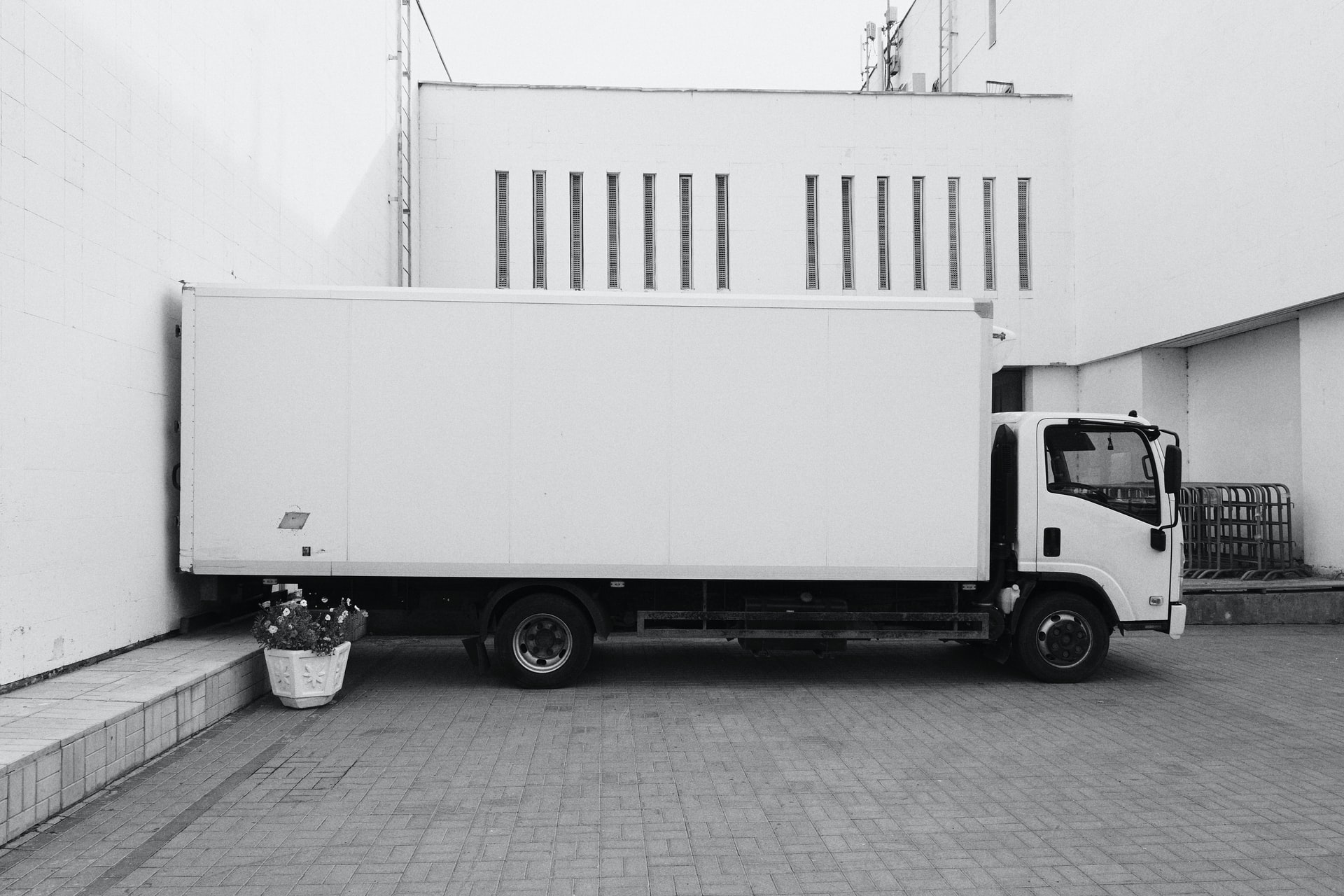
You might be debating whether you should move yourself or hire a mover. It doesn't necessarily have to be one or the other because you could always do a combination of the two. But if at any point you rent your own truck to move all or a portion of your belongings, you need to know the right way to pack the truck in order to ensure the safety of your items.
1. Supplies: The most important aspect of packing your own truck is having the right supplies. Just as you can't bake a cake without all the ingredients, so too you can't correctly pack a moving truck without the proper equipment. You'll need:
2. Preparation: Decide what you will pack in the truck and what you will take in your own car. First and foremost, make sure you pack a separate overnight bag with all that you'll need to live for a day. You might be so tired after you pack and drive to your new home that you may not feel like unpacking that day. So an overnight bag is essential so you don't have to dig through the truck for the things that you'll need on that first night. Also consider keeping some fragile items separate from what you plan to put in the truck (i.e. computer, TV, fine china).
3. Disassembling Furniture: Taking apart your furniture will make it easier to pack and carry. Remove pieces from the main unit that can be separated (i.e. removing the cushions from your couch and removing drawers from a dresser). This will give you more individual items, but will make the items easier to move because they are smaller and lighter. If you remove screws or other small parts, make sure to pack them in a bag and place a note on/in the bag reminding you what item they belong to. Of course, you may not be able to take everything apart. In this case, if the load is just too much, you can always hire a mover to move some of the very large and heavy items.
4. Packing The Truck: Place the heaviest items and large appliances (washer/dryer, refrigerator, stove) first into the truck. You don't want the back of the truck being too heavy because it could cause it to drag, resulting in unsafe driving conditions. Additionally, since you'll also be stacking items on top of each other, make sure to place the heavier ones on the bottom so they crush the lighter ones. Overall, packing the truck is like putting a puzzle together. Think about the best places to put everything. For example, lining your mattresses and cushions against the side of the truck will provide extra cushion to the things that are leaning against them. Another example is placing your dresser with the drawers facing the wall to help them stay closed while you travel. So make sure to go over the space in your head and put together the puzzle of where everything should go - DO NOT just start loading the truck with whatever you can grab first.
If you think you can brave this storm and pack and move yourself, the more power to you. But don't be ashamed to hire a professional moving company for a partial or full move because they will have the experience and resources to perform an expert move for you.
If you need a lending hand while moving your house, a professional moving company like US Border Movers can help move your valuable items to your new house.

Few things are as exciting as a new piece of real estate to call your own; it’s getting there that’s the problem. Moving is hard work, and expensive to boot.
According to the American Moving and Storage Association, an interstate move of 1,220 miles costs $5,630 on average. If you’re staying in the state, you’ll pay $1,170 on average.
While we can’t make your moving day completely stress free, we can help you save some money with these budget-conscious tips.
Renting a truck and moving yourself is the cheapest way to go, but if you’re not comfortable with that option, you can still cut costs by doing at least some of the moving yourself. Professional movers generally charge by weight, so you’ll save money if you pack up smaller items like clothes, dishes and home décor pieces and move them yourself in your car or a smaller rental truck and leave the bigger items such as furniture and fragile electronics to the professionals.
If you are hiring professional movers, get price quotes from at least three different companies. When you’re requesting quotes be sure to tell the movers the exact number of miles you’re moving, the estimated weight and size of your possessions, and any special needs you might have, such as fragile items.
If your move date is flexible, schedule it during an off-peak time. Many families choose to move during the summer when their children are out of school, and the majority of moves occur at the beginning and end of the month. So if you’re hiring movers, you’ll pay more on the last Saturday of June or the first Saturday of August. Instead, plan your move during less popular times like the fall or early winter, and shoot for midweek. Moving companies won’t have as much work scheduled and you can find better deals.
For an added fee, you can get insurance to protect your valuables while they’re being schlepped across town (or across country) by a mover, but you may not need to pay extra. Some homeowner’s and renter’s insurance policies cover your stuff during moving. Check your policy or ask your insurance agent before you end up double-insured.
At Home Depot, the price of a moving box ranges from 74 cents for a small, basic one, to $19.97 for a specialty TV box. Instead of paying for new boxes, start early and collect free ones. Friends, co-workers and family members are usually good sources of old boxes. You can also find heaps of boxes by asking grocery stores, big-box stores and gas stations in your area for their leftover shipping boxes. When it comes to packing, go old school and use newspaper or fabric items such as T-shirts to pack your valuables.
If you’re moving for a job, you might be able to deduct some of the expenses on your taxes. According to the Internal Revenue Service, full-time employees can deduct reasonable moving expenses if they’re moving 50 miles farther from their home than their old job.
Research the company before you sign the agreement or contract and look for companies which provide quality services. You wouldn’t go wrong with US Border Movers company.
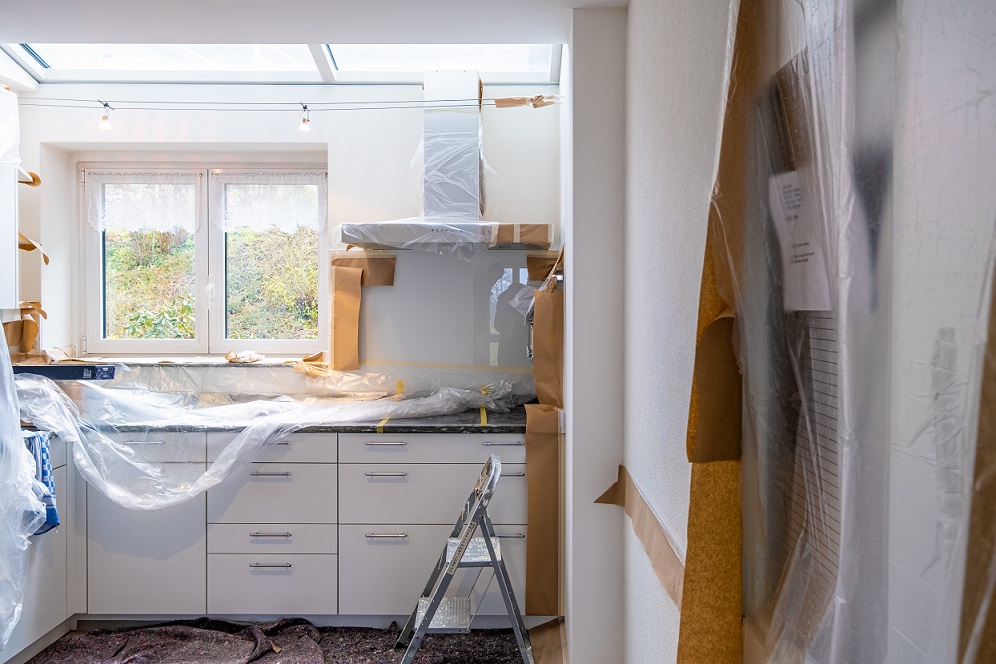
There could be a lot of reasons to relocate to a home that may require some major fixes. For one, they may want to repair it and re-market it for profit. Another reason may be for buying cheap, then redesigning for living long-term. The attraction to residing in a fixer-upper house is strong, particularly if the house is in a great location or it has some great potential. Getting into a house that requires lots of TLC must be handled by only individuals who are experienced, who understand the significance of planning, and who have strong will power.
Renovating a house then flipping it’s all about investing little money throughout the restoration process then when it comes to market it, there’s still an income to make. Individuals who are experts realize that the best kind of home for remodel and resale are ones that only need small, inexpensive fixes. It is most important that when purchasing fixer-upper that all possible fixes are considered in advance. Successes with these sorts of projects only originate from proper planning and smart choices.
For those who have no other choice but to live in the home long-term, then there are a few tips that may alleviate the process. It is wise to obtain a self storage throughout the restoration, and just keep in your house the fundamental products for living. Also, make sure to only focus on one project at any given time. By doing this it allows for other areas of the house to reside in and use.
Planning is an essential a part of moving into a home that requires remodeling. Without correct planning chances of doing things twice may become common. There is also a correct order to fix certain parts of the home. For instance, painting the walls before fixing drywall or doing wiring will be prone to painting twice. It might be smart to list fixes to be accomplished as well as the order they must be done. It is also a common rule to complete the outside of the house first such as the roofing and exterior walls. This prevents leaks from happening within the home. Then move onto other things like plumbing, electrical etc. If the flooring is sturdy enough just to walk on you’ll be able to leave that for last so you don’t scuff up or ruin the ground throughout other projects.
Click here for more moving tips.
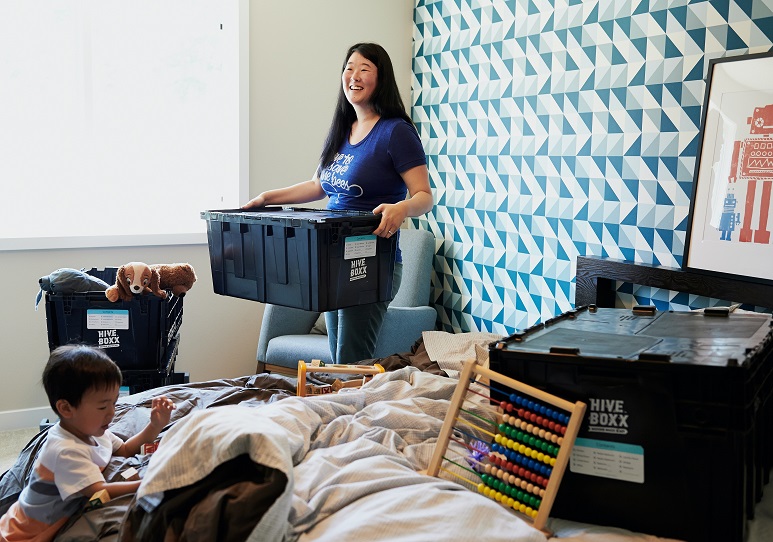
Packing up and moving to a brand new home can be exciting, terrifying and stressful all at once. Packing especially can be incredibly stressful and overwhelming. There are ways that you can reduce the stress of packing and make your packing more efficient.
The first obstacle you are going to encounter with packing is just how much time it takes. Because of the time commitment associated with packing, the best thing you can do is to try to pack one or two boxes every day. If you work during the day, one or two boxes in the evenings before bed will eventually pay off. On the weekends, unless you are equally busy, you can pack more. Have everyone in your home pack as well; giving them instruction if you need things packed in a certain way.
The best thing to do is to have everyone start with their own belongings first and then take time when you are together to pack the items that belong to everyone. Packing a little at a time and as a team will be less overwhelming and can even be fun; you can reminisce about past times in your life and bond with your family over times shared in your home. This process is not only efficient, it can be uplifting.
One of the most important things when you are packing is to stay as organized as possible. One thing that can help you do this is packing based on the rooms in your house. Packing room to room is especially good because you will be able to see the progress you are making. You will also be able to organize your new home with much more efficiency, especially if you label each box with the room its contents belong to and the general items that are in it. In the case of valuable, breakable, or damageable items, you want to be sure to wrap each item carefully and well. Old newspapers or clothes are especially good for this.
Wrapping your belongings will keep them from rubbing against each other and scratching it. This will reduce the chance of them breaking when dropped or handled roughly. Moving is an unpredictable process and you needed to do everything you can to protect your belongings. Finally, if you have anything especially valuable, like important documents or family heirlooms, you will want to pack these items yourself and personally transport them to your new home. This will protect them from being lost or stolen in the moving process.
If you’re looking for international moving services, check out US Border Movers.
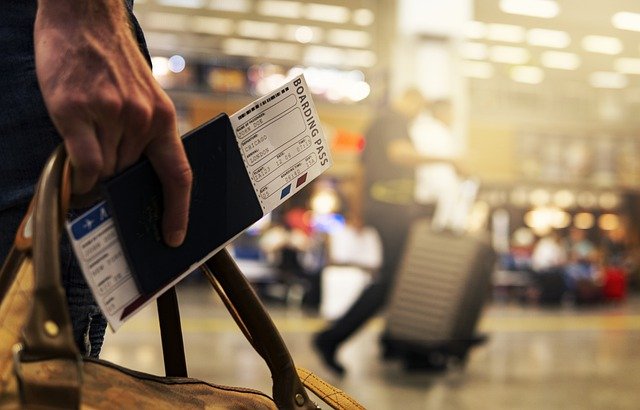
Taking your family on a vacation in a foreign country is far easier than to ultimately move in and live there. A lot of things come into play, and you need to consider each of these to make sure you and your family do not get lost and confused in the transition.
The concerns begin even in the decision-making period itself. You have to think first if the place youˇ¦re going to transfer is the best one for everyone involved. It is definitely a choice that involves thinking ahead to the future. Remember, you will sacrifice familiar scenarios and basically start over, so you must decide if it will be worth the effort. You have to consider that this will be the environment that will mould each member of the family as they live out their lives.
One of the primary concerns is of course the lifestyle that the family will now grow accustomed to. The culture will more or less be different for what you all were used to, and it may take some time to adjust accordingly. As much as possible, try to research the place, or at least the neighborhood you're moving at. This is to prepare for any questions that you should answer to put your family's mind at ease. The more you know about the country, the lesser the culture shock will be.
If you can, learn a little bit about their language if it is different from what you currently know so that your family can depend on you for initial communications. It is also advisable that you teach them at least the basics, like greetings. Learning their language will also help if you will be looking for aid about everyday things that you might not readily understand, like maybe different ways of measurements and voltage currents.
But your greatest worry will be what your family will individually think, including most importantly the children. Keep this in mind: their opinions should be taken into account, because you are not the only one hopping on that plane. They will have fears, and you should address them. New friends, new hangouts, and new schools are just some of the legit worries that you should also take into consideration with them. It is important to stress the words "with them" because with all your formal preparations, you might forget to even let them in on your moving plans. This might prove detrimental to how they view you as a parent in the long run, and you do not want something like that to add to your problems.
The most important thing to remember about moving in a foreign country is never leave out any detail, no matter how minor it may seem. The place matters, the people matters, and each family member matters. If you bear all this in mind, you will encounter lesser problems when you are ready to move overseas.
Looking for an international moving service to help you move overseas? Check out US Border Movers now!

Whether you're moving across the country or to the next town, relocating can be stressful to all. Advance planning can ease the trauma and it can be done from the comfort of your own home.
*Gather as much information as you can from your real estate agent, local newspapers, street maps, and telephone directories [these can be found in most public libraries]. Get in touch with the chamber of commerce for an information package listing banks, schools, and businesses in your new area.
Don't forget to obtain copies of everybody's medical, dental, and school records. Update all prescriptions as they usually cannot be filled in another state. And if you have pets, get their health certificates and shot records.
Take the time to prepare your children for the move. Be available to them to answer questions and to offer reassurance. The older the children, the more difficult it will be for them because they've formed stronger attachments outside the immediate family. So team up with your children; allow them a little control over some of their own packing. Explore your new town together and see if they'll develop friendships by participating in activities that are familiar to them. A very good time to move, if possible, is in the summer. Your children can begin the school year with everyone else. Having made a few acquaintances will have helped considerably when they are faced with new teachers and new rules.
Shop around and get bids from several moving companies. It is very important to ask if this company transports directly to the final destination. Because of interstate restrictions for some companies, more than one carrier might be used. Obviously, more handling might result in a higher risk of loss or damage to your goods. When comparing companies check: length of time in business, the number of contact people [one is preferable], state and federal licenses, pick-up and delivery procedures, storage facilities (dry, in a safe location?), are runners and protective padding used? the specific costs of packing, mileage, and unloading, type of insurance and liability, the truck driver's records, is there a tracking method for your goods while in transit, what is the company's on-time record, and what are the expected gratuities? Specific obligations and responsibilities should be written into the contract before hiring. You should also inquire if this is a local agent of a national carrier, and what are the benefits of dealing with a national carrier. Request a description of the company's procedures and the number of agents that must ultimately be contacted.
However, if you’re moving across borders, you can quickly narrow your search when you click here.
The American Moving and Storage Association (AMSA) is the largest international association of moving and storage companies. Headquarters are in Alexandria, Virginia. AMSA has rigorous educational and training programs of all levels of personnel. Contact the AMSA to find out if any moving company is a member.
Call the chamber of commerce or the Better Business Bureau to narrow your list. Membership in either organization might indicate reputation will at least inform you if any complaints have been lodged.
Each company you contact will send a representative for a walk-through of your home in order to assess the amount and type of household goods to be moved. Because this is a mostly seasonal business and thus a competitive one, it won't hurt to ask about a discount, especially for interstate relocations. Ask for a "not to exceed" bid to ensure no hidden or unexpected additional charges. Moving companies may state that they cannot guarantee a set "destination charge" in the bid. However, the driver determines this charge when the truck arrives at the ultimate destination. It is a good idea to have some pictures and to be able to accurately describe conditions and supply rough measurements of your destination house to the moving representative. Some companies charge more if furniture must be carried beyond what they consider a 'normal' distance, up or down a flight of stairs, or for 'specialty' items like pianos. Make sure you personally review all surveys of all inventory to be moved before you sign a survey sheet. Then, have a legible copy of everything surveyed and/or signed. Make sure each service and its cost is itemized.
Besides the cost of moving, there is the cost of the boxes and the packing and unpacking labor costs. Decide what you will pack and what you want to be packed professionally. The packing costs should be itemized and then added to the total after the survey. The price of packing can be reduced if you pack the non-breakable items yourself( books, linens, pots and pans, plastic ware, clothing, etc.).
You'll encounter another form, called the Binding Form, which states that you acknowledge the binding price is only for those services which have been listed. To make any changes, you must notify the moving representative to make an Addendum that will reflect any additional or deleted services or inventory and state the new price of the move.
An Order For Service form lists all the information of location, dates, method of payment, liability, any special services, and phone numbers. You should be certain of the accuracy of all the information before signing this form.
The Bill of Lading is signed on the day of the move and is a legally binding contract between you and the company. you should be given a copy of this form before the driver starts loading. Note the shipment registration number, which is usually in the upper right-hand corner. Keep this number in case of any questions regarding your shipment.
Try to use all lidded boxes, as this facilitates the work, making stacking easier, and helps reduce the risk of damage. Label all boxes boldly, especially if the contents are fragile. Clothes and linens should be left in dresser drawers, and perhaps you could pack a few small breakables in between some of the layers. Remove and hand carry all valuables such as cash and jewelry yourself. If you live in a building with an elevator. and you'll be needing the elevator to move, reserve it during the time of the move. Try to place all boxes and smaller items in one room near the front of the house or in the garage. This will make the move go faster. All desks and credenzas must be emptied, but 2 and 4-drawer filing cabinets can remain full. Try to disassemble all beds prior to the movers' arrival, as this can save time.
Allow for some flexibility in case of delays. A large van can transport more than one average-sized household, and if your household is being moved along with another household, a delay on one end can result in delays all down the line. The date of moving and alternate dates should be mutually acceptable and this should be written on the "order for service" form and the "bill of lading".
If you specifically request a weekend pickup or delivery the fee will be higher. But a spread of alternate dates that includes either a Saturday or Sunday is often available, and shouldn't cost you over time. Sunday, however, is usually not a good day for loading, as offices are usually closed and the driver won't be able to obtain additional supplies, assistance, or any forgotten but necessary paperwork.
You should see a special section for this program on "order for service" and the "bill of lading". Be sure to ask to be placed on this program. With it, the company must reimburse you in cash for each day's delay in either pickup or delivery outside of the agreed-upon spread of alternate dates. This could be as much as $100 or $125 a day. You must file a delay within 30 days of delivery. Even if your employer is paying for your relocation, you can receive this reimbursement. There will be set minimum requirements of weight imposed by the company, and these may vary seasonally, but since the average roomful of goods weighs between 1,000 and 1,500 pounds, a 2 or 3 bedroom household should usually qualify. A few possible restrictions on the guarantee may be if a storage facility is the destination or point of loading, or conditions such as strikes, riots, or natural disasters that might prevent passage.
The storage industry is rapidly expanding and still mostly unregulated. This can cause questions concerning the safety of your goods. Self-storage contracts usually hold the operator of the facility blameless, no matter what. Many problems can occur, from insider break-ins, water damage due to weather conditions, fire, and hazardous waste dumping.
To protect yourself and your goods take a few precautions: Examine the facility carefully. Note the security measures, lighting, tidiness, leaks-if any, and whether 24-hour video surveillance is provided. Consider paying a little extra for storage that is temperature-regulated. Extremes of temperature and humidity may damage some items that are sensitive to these factors( antiques, papers, etc.). Shop around for competitive prices There are so many storage facilities now open and opening all the time. Most are mom-and-pop type businesses, but about 11% of the business is run by corporations like U-Haul and Shurgard. Finally, a disc-type lock is recommended as it is not easy to cut with bolt cutters.
Upon arrival at the final destination, you must pay as agreed by whatever method was previously arranged before unloading begins. A certified check for the exact amount of binding price is recommended. While checking off numbers from your inventory sheets, check for damage as you instruct the movers regarding the placement of your goods. You should already know where the large items (i.e. furniture, appliances) will go.
If you request that the mover unpack some items for you (mattress, box spring), it would be correct to offer a gratuity. If you specifically requested unpacking done, the representative will add the extra charge to the final total.
This is also known as cargo (or transit) protection. To begin, make a household inventory and then go over your homeowner's policy and its provisions for relocation. A good idea for documenting your goods is to videotape them. Moving companies offer several kinds of coverage. What they are selling is not insurance. They are not an insurance company. They are selling coverage and accepting some degree of liability in return for a paid premium. You are being offered an option for compensation if any of your goods are lost or damaged while in transit with the moving company. Remember, though, that some companies will offer no compensation at all if they didn't do the packing.
Many companies are required to accept some responsibility when in transit. The protection is usually a small amount per pound and it varies. This should not cost you extra.
This is when a company charges a premium and increases the per-pound coverage amount.
This may cost less than "Full Replacement Value" coverage, but determining the market value of something can be difficult. It is based on what the item would sell for now, considering its age, condition, and amount of usage.
This allows you to receive reimbursement equal to the same item, brand new. There may be a deductible and this amount will be deducted before you are paid.
Many of these policies do not include damage while in transit due to shifting in the truck or breakage by you or the movers. Breakage or damage coverage may be acquired temporarily from the mover or permanently as a "floater" policy on your homeowner's or renter's insurance. If you require third-party insurance, this is not carrier protection. Make sure this company provides "All risk" insurance protection, comprehensive replacement costs, and coverage for "Acts of God": Hurricanes, tornadoes, earthquakes, floods, and high winds. You should also be covered for "Civil Commotion", which includes strikes or riots, and you should be protected while your goods are in approved storage. Make sure you receive a 'Certificate of Insurance'. This is important. Always check with the named insurer to validate and confirm the terms, and be repetitive if necessary, especially if the situation changes or appears confusing. Also, check the finances of the insurance company.
It is important that you put a valuation on your own goods. Leaving it up to the moving company may result in some discrepancies. Some questions you should ask are: What is the total coverage I get? What is the limit per item? How much is the deductible? Is it 'Market Value' or 'Replacement Value'? How do and with whom do they handle furniture repairs-this This will give you some idea of the quality of the work if damage should occur.
In the industry, 'released rate liability protection' is provided in the event of loss or damage by the mover. This is valuation protection and may vary in price. Read this section on your bill of lading before agreeing to pay for extra liability protection. It is important to discover the extent of the moving company's liability and to review your homeowner's insurance policy in case it does cover loss or damage to household goods while being moved.
Usually, if you store your goods in a warehouse for any length of time, separate insurance is needed. This can be arranged through the facility itself, the movers, or your insurance company. Storage facilities usually charge a minimal dollar amount per $1,000. of declared value for each month of storage.
Many items are not insured and should be taken with you. This list includes jewelry, coins, stamps, and important documents. Obviously, food will not be insured and anything of sentimental value is only covered by its actual cost. The inside workings of appliances, unless there is obvious damage to the outside are not covered. The same applies to boxes you packed yourself. Also, sets of anything are not covered. Only the damaged piece itself will be repaired or replaced.
Don't forget to back up your disks before moving as any loss of software data is not covered. If you have any items of extreme value, such as a car, or artworks, you must declare their value to the insurance company and your mover. There might be a limit to the amount the company will pay for one item. Find out what that limit is and notify your mover if any item exceeds that limit. It must be noted on the bill of lading for you to be covered.
These goods are explosives, such as ammunition or road flares, corrosives like vehicle batteries, oven, toilet, or drain cleaners, bleach, pool chemicals, fertilizers, household disinfectants, pesticides, matches, and wet clothing-which can spontaneously combust. If you pack any of these items which are considered dangerous goods, and any damage results because of one or more of these goods, your insurance might be void. Dispose of these goods responsibly and legally.
As your household goods are unloaded, make notes of any damage on your copy of the inventory sheet and the driver's copy as well. You will sign all pages of the inventory sheet and bill of lading and when you do you are agreeing to accept the shipment in apparently good condition except where damage or loss is noted.
ICC (Interstate Commerce Commission-213-894-4008) regulations allow you to file a claim up to 9 months after delivery of your goods. However, the faster you file, the better. Obtain all the forms you'll need, but don't expect negotiations to begin until the necessary claim forms have been submitted (by you) and the move has been paid for in full. Do not tamper with the damaged goods in the meantime, as the moving company may wish to restore or repair the item(s) after having sent someone to appraise the damage.
After submission of all appropriate forms to the moving company, the ICC requires a response from the company within 30 days, and within 120 days, the company must either deny the claim, pay it, or settle with a compromise. YOu must receive a letter within 30 days explaining any delay.
The ICC simply enforces regulations only, it cannot resolve a claim or force a company to pay a settlement.
The American Movers Conference (AMC) sponsors an arbitration program that is approved by the ICC and is operated by the American Arbitration Association. The program is for AMC member companies, so keep this in mind when selecting a company to move your goods. IF you are still unsatisfied regarding your claim, you could file a civil action suit. With a lawyer, this could be time-consuming as well as expensive.
When you are also moving your financial life, there are many details not to be overlooked.
At least 8 weeks before the actual move, open a checking account with an order for new checks with your address in your new city. Have the bank hold them for you if your moving day is within a month. At the new bank, fill out a form that allows the bank to send for disbursement of CD or IRA documents. Make sure your old bank's IRA department has your new address. Many banks offer a free service to help newcomers become financially settled.
Always obtain copies of your family's latest x-ray and test results from doctors and dentists so you won't have to repeat them. Take a detailed inventory of all the household items to be moved professionally by videotaping them, taking photographs, and recording all serial numbers. Hand-carry this inventory and all other important documents.
About 2 weeks before you move buy enough travelers checks to cover all expenses including travel and at least the first 2 weeks at your new home. Your new checks might be delayed, and while waiting for your in-state driver's license, you might not be able to cash any personal checks. Clear out all of your bank accounts by having the old bank wire the funds to your new bank, or if it is a small amount, take a cashier's check. Be very careful about the math and leave a balance if you have any checks still outstanding. Try to close accounts after interest has been earned by those interest-bearing accounts. Don't overlook valuables in your safe-deposit box. These should be hand-carried, and negotiable securities must be presented to your new bank in person. If you wish to send them by mail to be picked up at the post office, be aware of maximum liability coverage for a package, and the length of time it will be held. Some companies (Federal Express is one) will not accept negotiable documents for mailing. Call your mutual fund's service number to switch any automatic investment programs to the new bank. Send change-of-address cards to all credit institutions, lenders, and any other person or company with whom you deal directly.
Go over all insurance questions with your agent. Make sure that items you move personally will be covered, as well as expensive fragile items you might wish to take in your car. That coverage should be through your homeowner's or renter's, not the auto policy. Get referred to a local agent and leave your new address with your old agent.
Report your new address to the Revenue Department on Form 882 or call 800-829-3676. Take care of all change-of-address procedures with the tax department and Social Security(800-772-1213). Revise your will, power-of-attorney papers, living will, and all other legal documents by a local lawyer in your new town. An out-of-state will is valid, but fees might be higher and probate could take longer because of it.
Review investment decisions if your new state's taxes are different. Some investments such as tax-free municipal bonds might become more or less attractive to you. Also, look over insurance policies, especially auto, as where you now live (i.e. rural as opposed to city) might change not only some rates but also the deductible.
Under the Omnibus Budget Reconciliation Act of 1993, certain non-reimbursed moving expenses are allowed as a deduction when determining your federal adjusted gross income.
Deductible expenses include the cost of the actual transportation of the household goods from the old to the new residence, the cost of packing, crating, storage (limited to 30 consecutive days), and unpacking, the cost of shipping your automobile, the cost of transporting household pets, the cost of moving goods from someplace other than your old home (relatives', summer home, etc.) not to exceed the probable cost if you were to move them from your old residence, the cost of transporting the family, including lodging, but not meals.
To qualify for these deductions you must be changing your residence in order to work or be self-employed at a new principal place of work, your new place of work has to be at least 50 miles farther from your old residence as your old job location, and you must be a full-time employee at or near the new place of work for 39 weeks of the first 12 months following your move. In the event of death or disability, this condition will be waived. It will also be waived because of discharge, except if the discharge is due to willful misconduct. If you are self-employed you must work 78 weeks of the first 2 years after you have moved, with at least 39 weeks worked during the first 12 months.

You should remember to always include your family when making decisions that will affect all of their lives. Nowadays, parents often tend to disregard the opinions and the feelings of their children in making decisions affecting the whole family. The common line that can be heard is this: “Kids, we are moving to another country.” That’s it, end of discussion. What needs to be heard from you is this: “Kids, we have been presented with a wonderful opportunity, but in order to get that opportunity, we are going to have to move to another country. What do you think we should do?”
Parents know that any child will always react negatively to the question. Because of this, they would rather not listen. This can be very harmful to a child’s self-esteem. He or she might grow up thinking that you never had any respect for his or her opinion. Because of this, children often grow up resenting their parents.
Some parents think that the step of making the decision and breaking the news to the family should be separate. However, you need to understand that making the decision of moving the family internationally needs to be done by the family. You need to consider every opinion and you need to show that every opinion matters.
Once you have made a decision, you should encourage your children if they have any worries regarding the move. Of course, your children will have all sorts of questions about what would happen. They will also have a lot of fear. This is natural. We all fear the unknown. This understanding will give you the first thing that you can do to ease those fears.
You need to learn about where you are going. This is the best thing that you can do to assuage your fears. When your children know what to expect when your family moves to another country, they will be able to drive their fears away. This step will also help you since knowing about where you are going will help calm your fears too.
Moving your family internationally is not as simple as getting on a plane. There are a lot of considerations to face and there are plans to be made. Planning the move will help you make the transition much smoother for your family. In planning, you should try to find people who can help you. You should find and hire various services that can help you handle the intricate details of moving your family. There are also people who prefer not to move the whole family at once. Some people would plan the move in a series of steps with each family member following after a preset duration. This is ideal if you are on a tight budget, if you are planning to move to Mexico, there are plenty of great border movers that can help you, but be sure to look up “local movers near me” so that way your moving process will be smoother.
Moving your family abroad requires a lot of effort. You need to adjust to a new culture, a new climate, and a whole new way of living. The key to overcoming culture shock is to accept the fact that your way of life is not the only way of life. Respect the rights of others and you should be just fine. Make sure that your family also learns this lesson. By following these tips, you should find the experience of moving your family abroad to be pretty easy.

Puerto Vallarta has more to offer than just the sandy beaches, tropical nature and comforting stays, it also is a very artistic city hosting more Art Galleries than any other in Mexico. Artists from all around the world have contributed to the amazing artistic landscape of Vallarta through paintings, sculptures, ceramics, jewelry, literature and a unique Mexican new fashion.
There is no way you will be able to avoid the overwhelming and artistic spirit of Vallarta. You can admire art everywhere, such as in public places or local restaurants. You’ll find walls decorated with colorful paintings on buildings or public sculptures, artists on the streets and malecon, creating or selling their work.
Vallarta’s Art Scene has to offer everything from contemporary to traditional folk art in various Galleries. Just to name some famous ones: Galeria Dante, Galeria Arte Latinoamericano; and some other than local Galeries: Galeria Omar Alonso, The Galerie des Artistes.
Huichol Art is also a traditional work known in Vallarta, done by the Huichol tribe living in the mountains around Vallarta. Some galleries offer some insight into how the Huichol Indians create their artwork, by displaying them while working the bead and woven art to the passing tourists.
Generally from the end of September to April, during the high season, there is an ArtWalk in and around old town (Viejo Vallarta) taking place each Wednesday. With detailed maps in your hand, you can visit at least a dozen of galleries that will be awaiting your visit with complimentary hors d’oeuvres and refreshing cocktails.
The boardwalk of the Malecon along the beach is without doubt a kind of public art gallery featuring dozens of sculptures along the way. One of the beauties of this public art display is that it reflects the beauty of the bay and tropical surroundings combined with an amazing art scene.
There are some tours that will explain each sculpture and tell you about the artists behind the works. You will find something for everybody in PV, for every wallet, so be sure to take something with you when visiting Puerto Vallarta.
Vallarta with it’s Art and Culture awakens inspiration and creativeness wherever the eye can see. Come and see for yourself, because this place is open for new styles and concepts from around the world reflecting its hospitality to artists, art lovers and every type of visitors.
Contact US Border Movers for a convenient and worry-free move into your new home at Puerto Vallarta.

Moving from a house into an apartment is not rare, and the reasons may be numerous – searching for a change, reducing costs, getting a job in another town or getting married and moving away from the parents’ home.
Whatever the reason may be, it is not easy to switch from living in a house where you have your own privacy to the apartment where you will be surrounded by other tenants and where you will need to adopt a slightly different lifestyle, behavior and habits. In order to make moving into an apartment as easy and stress-free as possible, follow the advice we will give in this article. Manhattan is a prime example of a city with many amazing apartments. Be sure to find a top Manhattan real estate broker to help you find your dream apartment.
When you decide to buy or rent an apartment, it is important to choose the floor and the part of the building where you will feel the most comfortable. It is not the same whether you are on the first or the last floor, or somewhere in the middle of the building, surrounded by the other tenants' apartments from all sides.
If you are moving into an apartment from a house, it is better to choose the first or the last floor, where you will not be directly surrounded by so many apartments and tenants.
Moving from a house into an apartment usually means moving into a smaller space. This means that you will not be able to bring all the furniture and other items with you. Bring only what you absolutely need, and for the rest of the stuff there are several solutions. If some members of your family will go on living in the house, you can simply leave the part of the items there. If you will sell the house, you can also sell the items you will not need, and you can hire a storage room for the rest. It is also important to use up the space once you move into the apartment, because you may feel like you lack space if you do not pay attention to making the proper arrangement.
Moving is a big step no matter the circumstances and reasons for it. Therefore, it is always quite stressful, and the stress is even larger when you move from a house into an apartment. In order to make this moving less stressful and more successful, it is recommended that you hire a company that provides professional moving services. They will transport your stuff safely and timely, and they will also help you carry all the items to the apartment. Keep your family close – moving from a house into an apartment is a big change, and some people may find it difficult to cope with.
Therefore, keep your family close, support each other and if someone has difficulties adapting to the new lifestyle, make sure to be patient and provide all the help and support you can.
it is true that living in a house has many positive aspects, but living in the apartment has certain advantages over living in a house: you do not have to deal with the lawn, the costs of living are smaller, as well as your responsibilities if anything breaks. Focusing on the positive aspects of living in the apartment will help you adjust to the new situation faster and start enjoying your new life in the new home.

Simple steps to enjoying a romantic getaway in Puerto Vallarta Mexico. Vallarta Blog shares some tips on how to spend some romantic evenings in one of the most popular travel destination in the world.
There are areas with sand floors at the bars and magnificent panoramic views to the horizon where you will be able to enjoy the stars, sunsets, birds or fireworks. Some of these places are almost hidden but not difficult to find.
What you will encounter might be an incredible Japanese Styled and decorated courtyard with cozy dining areas that you wont find anywhere else in Mexico, offering comfortable chaise lounge areas, adequate for romantic evenings accompanied by a bottle of fine wine in an intimate atmosphere.
Doesn’t this sound magical? If you visit Mexico and end up wanting to stay forever, we don’t blame you. Let us make the process easier for you. Visit US Border Movers to learn more.
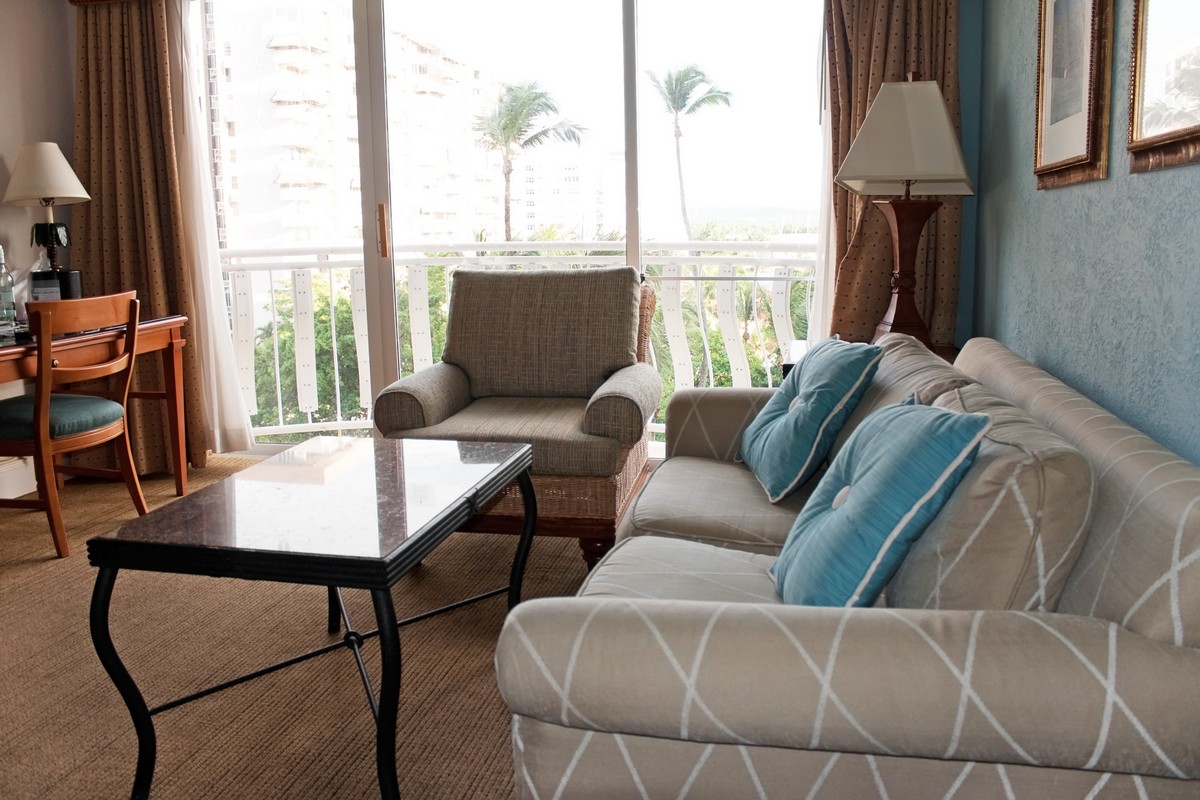
In my first few homes, I cleaned, but still missed a few things that weren't obvious to do. Here are some tips for how to make sure everything is as clean as possible before you set everything up the way you want it.
I never thought much about cleaning my walls and ceiling until I noticed cobwebs in my first apartment after moving in. Taking the time to clean the hidden corners and to wipe down air vents will get rid of dust that can wreak havoc on your allergies later.
Carpet is cleanest when steam cleaned, but a good vacuuming will get it close enough. While vacuuming, you might find dust and lint gathered up around the baseboards. The easiest way to get rid of this is to place paint tape beneath the baseboards and pull it up. A pencil is just the right width to help get the paint tape underneath the baseboard.
Non-carpet floors should be swept and then mopped. If you have wood floors, normal soap and cleaners will ruin them. If using a regular mop, fill your bucket with 1/2 cup white vinegar and 1 gallon of water. If using a Swiffer mop, wet mopping cloths made especially for wood floors are available.
Depending on who lived in your place before you, sinks, tubs, and toilets can be some of the grubbiest places in your new home. Hopefully you won't have to dig anything out of the drain, but if you do, make sure to follow it up with a drain cleaner to keep the drain flowing smoothly.
Sometimes the all purpose cleaner and shower cleaner just won't cut it. For stains, rust, and other tough spots to clean, baking soda is surprisingly helpful. If any residue is left over, just sprinkle baking soda on it and then use your sponge to scrub it in. After rinsing, the problem spot should be gone.
Baking soda can also be used to kick leftover smells out of a drain or garbage disposal. Pour ½ cup baking soda down the drain and follow it with 1 cup of white vinegar. Let this solution sit in the drain for a few minutes before rinsing it with hot water.
Grease remover and rags will help remove any residual grease from your exhaust fan and light above the stove. After this, you can focus on wiping down everything in the refrigerator and cleaning out your cabinets and drawers. Usually these will be fairly clean, but it doesn't hurt to wipe them out before using shelf liner just in case anything is hiding in them.
Make sure to wipe out the residue left from your oven's self-cleaning cycle, and to clean off the stove and countertops. Any tough residue on the stove can be removed with baking soda as well.
This may sound like a lot of work to do, but just keep in mind how comfortable it will make your home after you finish unpacking. Taking the time to deep clean your home before moving in will allow you to only have to deal with upkeep.
Lastly, if you’re preparing for a move to your new house and need an expert moving company to help move your belongings, be sure to check out US Border Movers.
Should You Move?
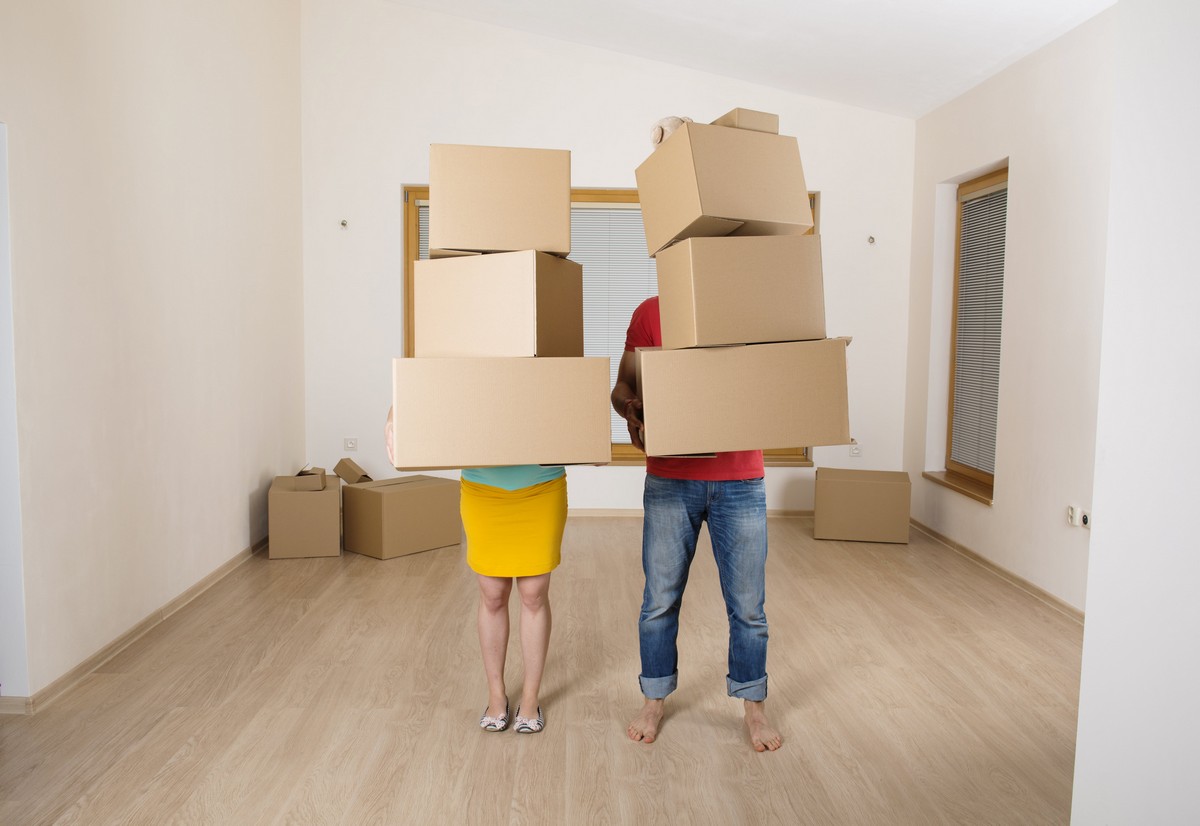
It was never easy to change to a new home so as it was never easy to remodel one. If this is the case, the question that will surely come out is whether you should move out or not. If the basis of your going out or stay would be the length of duration of the remodeling process, you must understand that it is really disruptive. Other homeowners don't know for a fact that such process is both disruptive and at times intrusive. So with this facts mentioned, would you now move out? Other remodeling process can take a long period of time and it would be easier on the part of your contractor if you will move out but, how about your part? It would be a burden for you and it might even cost you a lot. But through right understanding, you will feel the right way and make the right decision. Here are some things you might consider if faced with the question of moving out.
Ask yourself, of course even the contractor if how long the remodeling process would last. If it will be long and moving out would add up to the ease of working of the contractor, then, why not? Besides, you will be the ones benefited so they can work faster without seeming disruptive and intrusive on your part.
Ask if what rooms will be affected in the remodeling proper. If it would not take most of the house, better stay. There is a less chance of disruption and intrusion that might occur.
Ask yourself if you can survive for the time being away from your place. But always be objective. Besides, this remodeling will be for your benefit in the long run.
Ask yourself if family affairs or activities be done in other part of the room in case of the unavailability of certain areas. Of course, we cannot go away with routinely things of our family. But also put in mind that this is only for a time being. Next question in line with this would be ‘can temporary places be created elsewhere?' There are a lot of options you can make. You might even be surprised at the possibility of these new areas.
One of the most pressing considerations is if one of the family members is allergic of sensitive to dust. If yes, you must better move out or stake anyone because of the remodeling. Also, ask if the remodeling would affect your children's sleeping and eating area. Yes, you are having this remodeling for the benefit of your child but perhaps in the short run they will be affected so better be cautious.
Another pressing question, can you afford rent a house for the time being or can you stay with any of your relatives?
And the most pressing question, can you tolerate daily disruptions because of the remodeling?
Answer these questions for you to be stimulated and for you to think well. You can even consider the ideas presented. But we know that you have your own situation so at the end, it will be you who will determine your decisions.
If you need moving services across the United States, click here.
Moving Resources - Moving Notification Checklist

After working so hard to build and maintain positive credit, keep up the momentum by following this checklist to make sure you have notified utilities and other businesses’ so you won’t miss any of your mail or other services when you move.
If a personal account has been created, many companies allow you to change your billing address online through their website. However, to ensure all your mail makes it to your new home, fill out a change of address form at your local post office. You may seek help from, for example, a Mexico relocator if that’s where you’re headed.
- financial institutions (bank, stock broker etc)
- credit card companies
- utilities (gas, water, heat, electric)
- auto loans
- healthcare providers
- employer
- childcare providers
- school
- local / long distance telephone service providers
- cable / satellite company
- internet service provider
- magazine subscriptions, book clubs
- religious organizations
- stock brokers, mutual funds
- newspaper delivery
- accountants and other tax preparers
- business, social organizations
- landscaping and other household services
Moving to a new house? US Border Movers company will do all the heavy lifting for you.
© Copyright MM by Kirk KnestisLast updated 7 October 2000